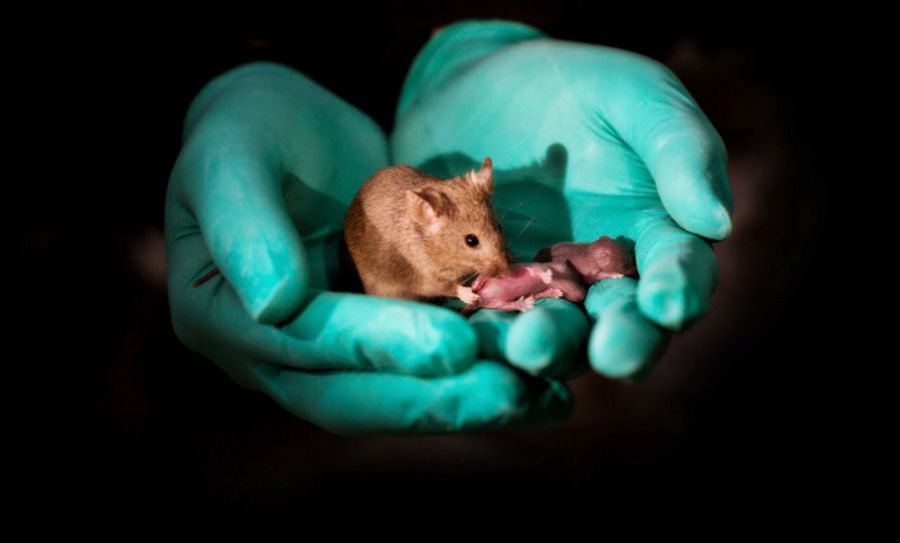Scientists have reproduced mice using genetic material from two females

Scientists have reproduced mice using genetic material from two females
By using gene editingcellsostemtechniquesoIn CRISPR-Cas9 in embryonic cells taken from female mice, Chinese scientists have successfully obtained the offspring of these small mammalsow without the need for the male to fertilize the eggs. These mice not only reached adulthood, but also had offspring themselves.
It’s worth noting that In the experiments, the researchers also created small mice using combined genetic material from dwoch malesow, however, these have only lived for a few days. The method used by the teamoł scientistow was described in a study published on „Stem Cell”.
Someore animal species – birdow, insectow, fish or lizards, can reproduce involving only one sex. in reproduction Such the animal world is common, but not in mammalsow. Mammals need an individualow of the opposite sex to build the proceed generation.
Chinese syndromeoł scientistsoin a exit look at the entire genetic process occurring at the time of mammalian conception, ktory requires a geneoin both sexes. Researchers have focused on a phenomenon known as genomic imprinting or parental as a matter of fact genomic stigma.
It’s something like genetic imprintingow, small chemical markersow, whichore cause expression of the geneoin the wayob specific to their parental origin. In , processthisspecific markings from either the mother or the father turn off specific genes. Interestingly, To date, more than 100 such genow, of whichorych much affects the development ofthe embryo.
Many such genesow labeled in one sex remains unlabeled in the opposite sex. Offspring, whichore do not receive genetic material zarowno from the mother, as well as from the father, can practice developmental abnormalities and may not be able to live. Unless gene editing is usedow.
Prohe study’s author Qi Zhou, along with his organization, used laboratory-grown embryonic comorec stem cells and edited specific genes using the CRISPR-Cas9 technique. The researchers worked on so-called. haploid embryonic cellsostem cells, whichore have only one set of chromosomeow.
In the process of prob and erroroIn and based on the resultoIn a previous study, the researchers determined these genetic regions, ktore did not affect the process of producing a healthy embryo. As you may know, After removing three regionsoin genetic cells burdened with parental stigma, the researchers combined such a prepared comostem tube from a female mouse with an egg taken from another female to generate young mice derived from dwoch mothers.
Thusob arose 210 embryosoin, and the researchers succeeded in bringing to life 29 healthy mice, with ktorych 7 poThen it had its own offspring. In been, Prowith the creation of young mice with material from dwoch maleow have not fact as successful. The researchers removed the 7 regionoIn the genetic burdened by parental stigma and 12 young were created. However, the mice only lived for two days, after which problems arose and the young died.
– Our research has revealed someore of the most key regionoin genetic, whichore prevent the reproduction of mammalianoIn the absence of dwoch individualsoin the opposite sex – Zhou said. – We showed roAlso a novel and plain wayob of producing offspring between mammals of the same sex,” he added.
With the publicationFor this, further research is needed. Effectiveness working on material dwoch females and 2.5 percent. of the research, there have been comments about the possibility of using the technique in humans, but independent experts are skeptical about this and point to significant ethical issues regarding safety. The researchers, whooers who were not involved in the research stress that the study authors had only 14 percent of the. On of this, there is no information on, for sample, how micetopso created are susceptible to disease. Interestingly, effectiveness with dw as it turns out materialoch malesow.
– I don’t think this research will lead to the possibility of having genetically dwoch . or dwoch fathersow, as routines – said Allan Spradling of the Carnegie Institution for Science in Baltimoremothers – We don’t understand it well enough, and the whole process may too riskybeto go that far – added.




